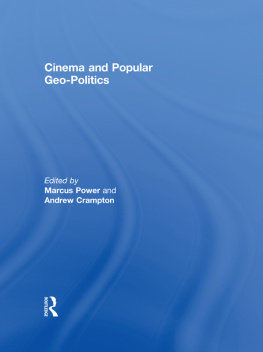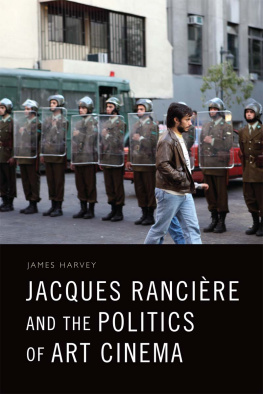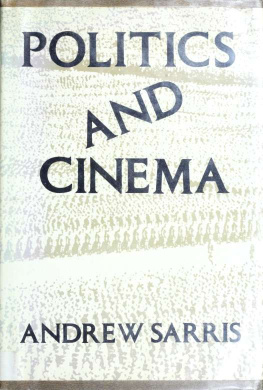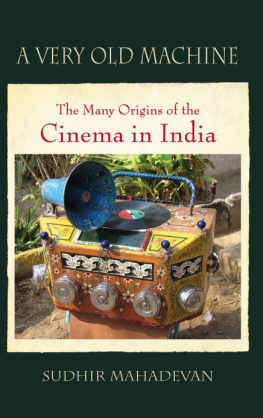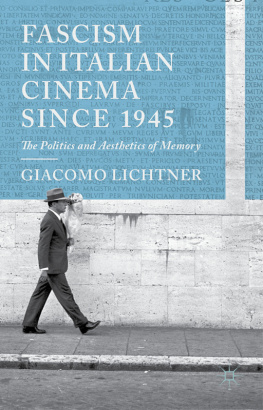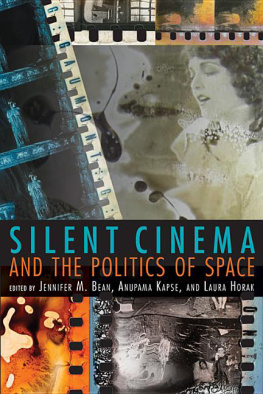Cinema and Popular Geo-Politics
With a detailed range of approaches, this new collection investigates how cinematic narratives can and have been used to portray different political threats and dangers.
Including a range of chapters with a contemporary focus, it explores issues such as:
- how the geopolitical world has been constructed through film
- how cinema can provide explanatory narratives in periods of cultural and political anxiety, uneasiness and uncertainty.
Examining the ways in which film impacts upon popular understandings of national identity and the changing geopolitical world, the book looks at how audiences make sense of the (geo)political messages and meanings contained within a variety of films from the US productions of Hollywood, to Palestinian, Mexican, British, and German cinematic traditions. This thought-provoking book draws on an international range of contributions to discuss and fully investigate world cinema in light of key contemporary issues.
This book was previously published as a special issue of Geopolitics.
Andrew Crampton teaches at Kings Norton Girls School, Birmingham, UK.
Marcus Power is a Lecturer in the Department of Geography at the University of Durham.
Cinema and Popular Geo-Politics
Edited by
Marcus Power and Andrew Crampton
First published 2007
by Routledge
2 Park Square, Milton Park, Abingdon, Oxon, OX14 4RN
Simultaneously published in the USA and Canada
by Routledge
711 Third Ave, New York, NY 10017
Routledge is an imprint of the Taylor & Francis Group, an informa business
2007 Taylor & Francis Ltd
All rights reserved. No part of this book may be reprinted or reproduced or utilised in any form or by any electronic, mechanical, or other means, now known or hereafter invented, including photocopying and recording, or in any information storage or retrieval system, without permission in writing from the publishers.
British Library Cataloguing in Publication Data
A catalogue record for this book is available from the British Library
Library of Congress Cataloging in Publication Data
A catalog record for this book has been requested
ISBN10: 0415348188
ISBN13: 9780415348188
Contents
Marcus Power and Andrew Crampton |
Elena Dellagnese |
Michael J. Shapiro |
Andrew Crampton and Marcus Power |
) | Klaus Dodds |
Deborah Dixon and Leo Zonn |
Nurith Gertz and George Khleifi |
Simon Philpott and David Mutimer |
Gearid Tuathail |
Inga Scharf |
Marcus Power
School of Geographical Studies, University of Bristol, Bristol, UK
Andrew Crampton
Department of International Studies, Nottingham Trent University, Nottingham, UK
American foreign policy and filmtrack each other through time as compulsively as symmetrical sundials1
As millions of people watched the horrific spectacle of the Twin Towers collapsing after the September 11 terrorist attacks, many eyewitnesses and survivors compared their dramatic experiences to a variety of Hollywood movies. In many ways Hollywood movies provided a language and imagery that commentators drew upon in making sense of the attacks and their geopolitical implications and many Hollywood producers, directors and writers later explained that they too believed many Hollywood films had seemed to predict the atrocities of 9/11. The images of destruction in films like The Siege, Die Hard and The Peacemaker (amongst many others) became important reference points and ways of enframing popular understandings of the radically changing geopolitical world.
In October and November 2001 Pentagon officials began a series of meetings with Hollywood directors, screenwriters, scenarists and specialists in disaster movies to solicit the help of Hollywood in the war against terrorism and imagine possible future scenarios and responses to them.2 White House advisors also met with Hollywood executives to discuss the role of Hollywood in getting the right ideological message across not only to Americans, but also to the Hollywood public around the globe.3 The subsequent release of films like Black Hawk Down and Behind Enemy Lines arguably signalled a resurgent Hollywood interest in narrating US global military adventures. Moreover, their success at the box office suggests the contemporary popular appeal of a remilitarised US global role and, in the context of the new Coalition against Terrorism, also suggest a hunger for explanatory narratives in this period of cultural and political anxiety, uneasiness and uncertainty. These and other films have attempted to (re)author a new post-9/11 geopolitical certainty and for some observers, these films have paved the way for further US/Coalition interventions, building support amongst the cinema-going public for a variety of global political campaigns.4
Of particular interest and importance in films like these are the ways in which they crystallise or firm up the uncertain role of America, American identities and US citizens in global political dramas particularly during moments of crisis. Important questions can be raised about the ways in which geopolitical imaginations are expressed through film and about how different threats and dangers are constructed through various Hollywood narratives.
The articles in this special issue explore many of these themes in more depth and elaborate the complex connections between film and geopolitics. They reflect in various ways on common themes of national identity, gender and the construction of masculinity and ethnicity through film and seek to explore the importance of borders, boundaries and territories to cinematic narratives. The initial idea for a special issue emerged out of a piece of research we conducted on an earlier period of geopolitical change and uncertainty.5 The period from the end of the Second World War through to the early 1950s saw film in the United States become a central battleground for constructing and challenging Cold War geopolitical boundaries and imaginative geographies.
During the Second World War Hollywood was sent to war and produced many films such as Days of Glory (1943), North Star (1943) and Mission to Moscow (1943) that articulated a kind of Celluloid Russophoria6 mythologizing Russian peasant life and showing the Soviet Union as a worthy ally that was not all that different from the United States. In the changing geopolitical context of the Cold War this was reversed into a Russophobia with Hollywood, under pressure and fear from the House UnAmerican Activities Committee (HUAC), producing series of Reds under the beds films depicting communist infiltration in the United States. Films like Behind the Iron Curtain (1948), I Married a Communist (1949), The Red Menace (1949), Big Jim McClain (1952) and My Son John (1953) constructed discourses of danger that ran alongside and extended other important and official geopolitical discourses. Films of this period were intimately connected to the formation of new geographical imaginations and in this sense their imagery formed a kind of geopolitical world:


